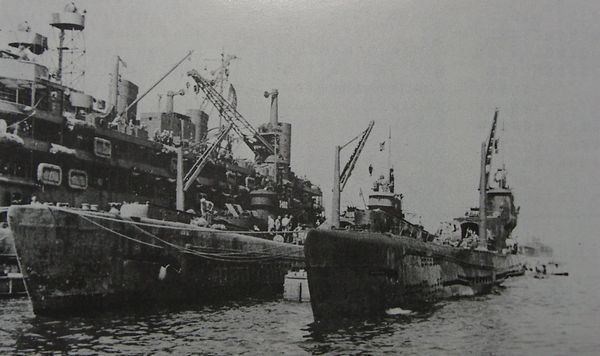Operators Imperial Japanese Navy In service 1944–45 Completed 2 | Preceded by Type A2 submarine Planned 7 Cancelled 5 | |
 | ||
The Type AM (A Modified) submarine (巡潜甲型改二潜水艦, Junsen kō-gata kai-ni sensuikan, "Cruiser submarine type A modified 2"), also called I-13-class submarine (伊一三型潜水艦, I-jū-san-gata sensuikan) was a pair of large, aircraft-carrying cruiser submarines built for the Imperial Japanese Navy (IJN) during World War II.
Contents
Design and description
The Type AM submarines were versions of the preceding A2 class with the command facilities replaced by an enlarged aircraft hangar were fitted for a pair of Aichi M6A1 floatplane bombers. They displaced 3,661 tonnes (3,603 long tons) surfaced and 4,838 tonnes (4,762 long tons) submerged. The submarines were 113.7 meters (373 ft 0 in) long, had a beam of 11.7 meters (38 ft 5 in) and a draft of 5.9 meters (19 ft 4 in). They had a diving depth of 100 meters (330 ft).
The machinery was reduced in power from the A2-class boats. For surface running, the boats were powered by two 2,200-brake-horsepower (1,641 kW) diesel engines, each driving one propeller shaft. When submerged each propeller was driven by a 300-horsepower (224 kW) electric motor. They could reach 16.75 knots (31.02 km/h; 19.28 mph) on the surface and 5.5 knots (10.2 km/h; 6.3 mph) underwater. On the surface, the AMs had a range of 21,000 nautical miles (39,000 km; 24,000 mi) at 16 knots (30 km/h; 18 mph); submerged, they had a range of 60 nmi (110 km; 69 mi) at 3 knots (5.6 km/h; 3.5 mph).
The boats were armed with six internal bow 53.3 cm (21.0 in) torpedo tubes and carried a total of a dozen torpedoes. They were also armed with a single 14 cm (5.5 in) deck gun and two triple and one single mount for 25 mm (1 in) Type 96 anti-aircraft guns.
In comparison to the A2 class, the aircraft hangar was enlarged to accommodate two aircraft. It was offset to the right of, and was faired into the base of, the conning tower which protruded over the left side of the hull. A single catapult was positioned on the forward deck. Two folding crane on the forward deck were used to recover the floatplanes.
Boats
Seven units were ordered, but only two were completed, while construction of two more was abandoned in March 1945. Construction of the remaining three submarines never started.
